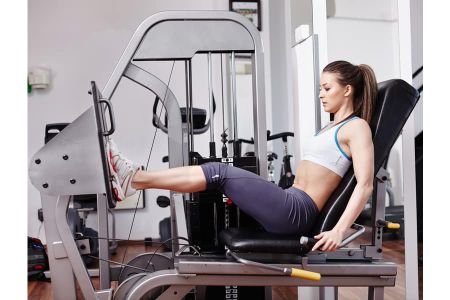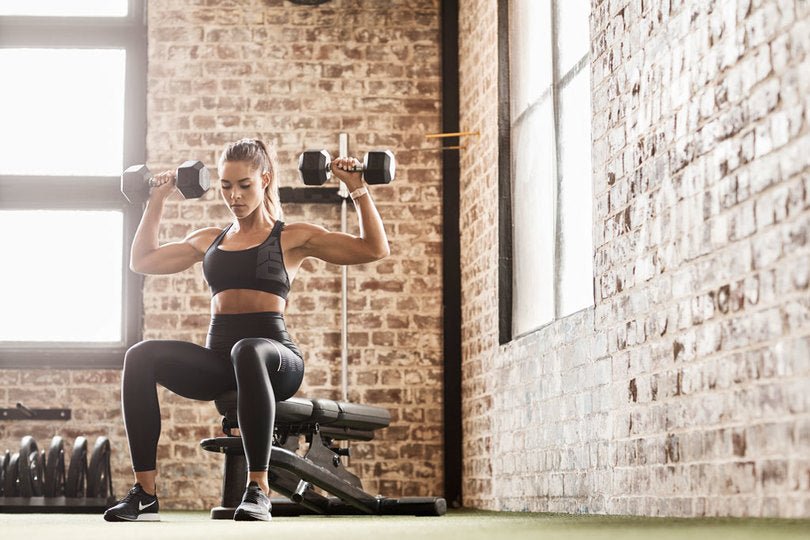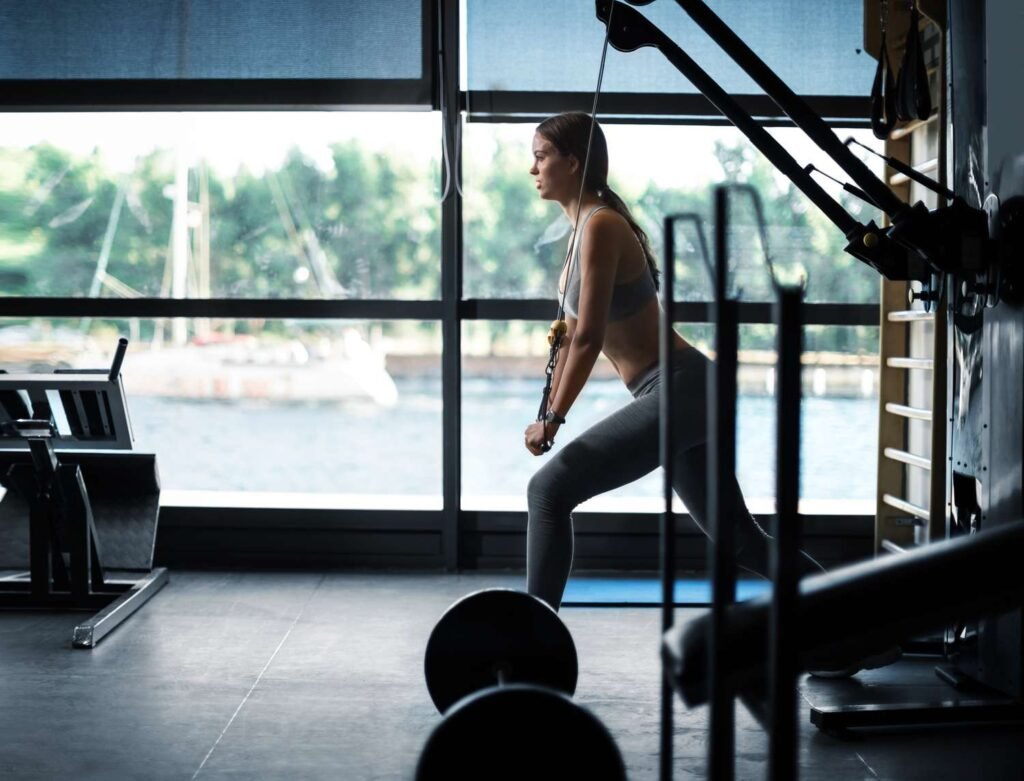If you’re new to strength training or looking to switch up your routine, you probably have a lot of questions about the equipment involved. What exactly do you need to get started? Are there any benefits to using equipment during your workouts? And how do you properly maintain and care for your gym equipment? In this article, we’ll answer these frequently asked questions and more, providing you with the information you need to confidently navigate the world of strength training equipment. So let’s get started and find out everything you need to know about this essential aspect of your fitness journey.
What equipment is required for strength training?
Strength training is a popular form of exercise that helps build muscle mass, increase strength, and improve overall fitness. To effectively engage in strength training, it is important to have the right equipment. While there are various types of equipment available, some essentials for strength training include:
1. Resistance Bands:
Resistance bands are versatile and portable, making them a great addition to any strength training routine. They come in different levels of resistance, allowing you to tailor your workout to your fitness level. Resistance bands can target specific muscle groups and are particularly useful for strengthening the upper body and core.
2. Free Weights:
Free weights, such as dumbbells and barbells, are commonly used in strength training. They provide a wider range of motion compared to machines and engage multiple muscle groups simultaneously. Free weights allow for more functional movements and can be adapted to suit individuals at different fitness levels.
3. Weight Machines:
Weight machines are commonly found in gyms and fitness centers. These machines typically use stacked weights or resistance bands to provide resistance during exercises. They are particularly useful for beginners, as they offer stability and guidance in performing exercises with correct form.
4. Exercise Bench:
An exercise bench is a versatile piece of equipment that can be used for various strength training exercises, such as bench presses, step-ups, and tricep dips. It provides support and stability, allowing you to maintain proper form during exercises.
5. Stability Ball:
A stability ball, also known as a Swiss ball or exercise ball, can add instability to exercises, which engages your core muscles and improves balance. It can be used for exercises such as stability ball crunches, planks, and push-ups.
6. Pull-Up Bar:
A pull-up bar is a simple yet effective piece of equipment for upper body strength training. It can be used for exercises like pull-ups, chin-ups, and hanging leg raises.
What are the benefits of using equipment during strength training?
Using equipment during strength training offers numerous benefits, including:
1. Increased Resistance:
Strength training equipment allows you to progressively increase the resistance as your muscles adapt and become stronger. This helps promote muscle growth and continually challenges your body.
2. Targeted Muscle Engagement:
Different types of equipment offer varying degrees of muscle isolation and engagement. By using equipment, you can specifically target and strengthen particular muscle groups, facilitating balanced muscle development.
3. Versatility and Variety:
Having access to different types of equipment adds versatility and variety to your strength training routine. Whether it’s using free weights, weight machines, or resistance bands, you can vary your exercises and target different muscle groups, preventing workout plateaus and keeping your workouts interesting.
4. Improved Safety:
Strength training equipment, particularly weight machines, provides stability and guidance during exercises. This reduces the risk of injury by ensuring proper form and alignment while performing movements.
5. Convenience:
Having strength training equipment at hand, whether at home or in a gym, offers convenience and flexibility in incorporating strength training into your routine. You can easily adjust the resistance, vary exercises, and customize your workouts according to your preferences and fitness goals.

Are weights and equipment required for strength training?
While weights and equipment are not necessarily required for strength training, they are highly recommended for optimal results. Using weights and equipment allows you to progressively overload your muscles, stimulating growth and increasing strength more effectively. However, bodyweight exercises can still be incorporated into a strength training routine, especially for beginners or those with limited access to equipment.
How often should gym equipment be replaced?
The lifespan of gym equipment depends on several factors, including the quality of the equipment, frequency of use, and maintenance practices. On average, most commercial gym equipment is designed to last for about 10 to 20 years with regular use. However, some equipment, such as treadmills and ellipticals, may require more frequent replacement due to their higher wear and tear.
To ensure the longevity of gym equipment, it is essential to follow manufacturer guidelines for maintenance and servicing. Regular inspections, cleaning, lubrication, and prompt repairs are crucial in extending the lifespan of equipment.

How long does strength equipment last?
The durability and lifespan of strength equipment vary depending on several factors, such as the quality of the equipment, frequency of use, and maintenance practices. Well-maintained strength equipment can last for many years, even decades.
High-quality commercial strength equipment used in gyms and fitness centers is designed to withstand heavy usage and frequent movements. These machines often come with warranties that cover structural components, moving parts, and frames for a specific period. As long as the equipment is properly maintained and serviced, it can provide reliable performance and durability throughout its lifespan.
How do you maintain gym equipment?
To maintain gym equipment and ensure its longevity, the following maintenance practices should be followed:
1. Regular Cleaning:
Regularly clean gym equipment using non-abrasive cleaners and disinfectants to remove sweat, dirt, and bacteria. Pay special attention to touchpoints such as handles, seats, and consoles.
2. Lubrication:
Check the manufacturer’s instructions and lubricate moving parts, such as pulleys, guide rods, and weight stacks, as recommended. This helps prevent friction and ensures smooth operation.
3. Inspection:
Regularly inspect equipment for wear and tear, loose or damaged parts, and any signs of malfunction. Promptly address any issues to prevent further damage and potential safety hazards.
4. Adjustment:
Check and adjust seat positions, cable tensions, and weight stack alignment regularly to ensure proper function and user safety. Consult equipment manuals or seek professional assistance for accurate adjustments.
5. Professional Servicing:
Schedule regular professional servicing for complex equipment, especially motorized machines like treadmills and ellipticals. Technicians can conduct thorough inspections, tune-ups, and repairs to keep equipment in optimal condition.
By implementing these maintenance practices, gym owners and individuals can prolong the lifespan of their equipment, ensuring safe and efficient workouts.

What is the purpose of strength machines?
Strength machines are specifically designed to target and isolate specific muscle groups while providing a stable and controlled environment for strength training. These machines typically use a system of pulleys, levers, and weights to create resistance and allow for various exercises.
The purpose of strength machines is to:
1. Provide Stability:
Strength machines offer stability and support, particularly for beginners or individuals recovering from injuries. The guided movements and fixed range of motion help maintain proper form while reducing the risk of injury.
2. Isolate Muscle Groups:
Many strength machines are designed to isolate specific muscle groups, allowing for targeted strengthening and muscle development. This can be particularly beneficial for individuals who want to focus on specific areas or have muscle imbalances.
3. Facilitate Progressive Overload:
Strength machines typically have easily adjustable weight stacks or other resistance systems, allowing users to gradually increase the resistance as muscles adapt and become stronger. This facilitates progressive overload, a key principle in strength training for muscle growth and strength gains.
4. Offer Training Variations:
Strength machines often offer a variety of exercise options for different muscle groups. This enables individuals to perform a range of exercises without the need for multiple pieces of equipment, saving both space and time.
Why are strength training machines good for beginners?
Strength training machines are particularly beneficial for beginners due to the following reasons:
1. Simplified Movements:
Strength machines provide guided movements and fixed range of motion, making it easier for beginners to perform exercises with proper form. This reduces the risk of injury and helps establish good movement patterns.
2. Increased Stability:
Strength machines offer stability and support, providing beginners with a secure environment to perform exercises. This can be reassuring for those who may feel uncertain or unstable while using free weights.
3. Muscle Isolation:
Strength machines often target specific muscle groups, allowing beginners to focus on individual areas and develop strength gradually. This can help build confidence and create a foundation for more complex exercises.
4. User-Friendly Design:
Strength machines are typically designed with user-friendliness in mind, featuring intuitive adjustments, clear instructions, and visual cues. This makes them easily accessible and approachable for beginners with limited exercise experience.
While strength training machines can be an excellent starting point for beginners, it is important to gradually incorporate free weights and functional exercises as one’s strength and confidence grow.

What are the pros and cons of machine strength training methods?
Machine strength training methods have their own set of pros and cons. Here is a breakdown of some of the key advantages and disadvantages:
Pros:
-
Safety: Strength machines provide stability and guidance, reducing the risk of injury and allowing users to focus on proper form.
-
Ease of Use: The fixed range of motion and guided movements make strength machines easy to use, particularly for beginners or those with limited exercise experience.
-
Muscle Isolation: Strength machines target specific muscle groups, allowing for targeted muscle development and addressing muscle imbalances.
-
Progressive Overload: Many strength machines offer easily adjustable weight stacks or resistance systems, enabling users to progressively increase the resistance as they become stronger.
Cons:
-
Limited Range of Motion: Strength machines often restrict movement to a predefined path, which may not engage stabilizing muscles or promote functional movement patterns as effectively as free weights.
-
Less Core Activation: Due to the stability provided by strength machines, the activation of core muscles may be reduced compared to exercises performed with free weights or unstable surfaces.
-
Muscle Imbalances: Relying solely on strength machines may lead to muscle imbalances since they often isolate specific muscle groups, neglecting the synergistic interaction of muscles required in functional movements.
-
Lack of Real-Life Application: Strength machines often have a fixed range of motion and may not translate well into real-life functional movements that require stabilization or dynamic control.
What are some common misconceptions about strength training equipment?
-
Myth: Strength training makes you bulky: One common misconception is that strength training with heavy weights or equipment will automatically make you bulky. In reality, achieving a bulky physique requires specific training programs, nutrition, and genetics. Strength training can promote muscle tone and increase strength without necessarily causing excessive muscle mass.
-
Myth: Machines are safer than free weights: While strength machines offer stability and guidance, they are not inherently safer than free weights. Correct form, appropriate weight selection, and proper progression are crucial for safety regardless of the equipment used.
-
Myth: You need expensive equipment for effective workouts: Effective strength training can be achieved using a variety of equipment, including inexpensive options such as resistance bands or bodyweight exercises. The key is optimizing resistance and progressively challenging your muscles, regardless of the equipment used.
-
Myth: Strength machines are for beginners, free weights are for advanced lifters: Both strength machines and free weights have their place in strength training, regardless of an individual’s experience level. Each offers unique benefits, and a combination of both can provide a well-rounded strength training program.
Strength training equipment can greatly enhance your workouts and help you achieve your fitness goals. By understanding the different types of equipment available, their advantages and disadvantages, and how to properly maintain them, you can make informed decisions and maximize the benefits of strength training. Remember, it’s always important to consult with a fitness professional or trainer to ensure you are using equipment correctly and safely.



